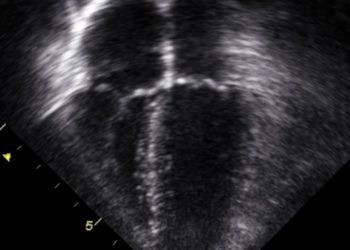Balanced intravenous solutions reduce risk of hyperchloremia in the pediatric intensive care unit
1. In a randomized controlled trial of critically ill pediatric patients requiring intravenous fluid therapy, children receiving saline were significantly more likely to have a serum chloride rise of 5 mEq/L than those receiving either gluconate/acetate-buffered solution or lactate-buffered solution.
2. The odds of a serum chloride rise within 48 hours were reduced by 50% in children receiving gluconate/acetate-buffered solution and 53% in those receiving lactate-buffered solution compared to the group receiving saline.
Evidence Rating Level: 1 (Excellent)
Study Rundown: Children admitted to pediatric intensive care units (PICUs) for a variety of causes often require intravenous fluid therapy. This randomized trial aimed to assess the potential benefit of using balanced solutions (gluconate/acetate-buffered solution or lactate-buffered solution) compared with saline (0.9% sodium chloride) in preventing rises in serum chloride. Among 516 randomized critically ill patients, the incidence of an increase in serum chloride by at least 5 mEq/L was 25.2% in the group receiving gluconate/acetate-buffered solution, 23.9% in the lactate-buffered solution group, and 40.0% in the saline group. The odds of a serum chloride rise were significantly reduced in both the buffered solution groups compared to the saline group. There were no significant differences in secondary outcomes, including rates of acute kidney injury, organ-dysfunction-free survival, or length of PICU stay, between groups. This study convincingly shows a decreased risk of rising serum chloride levels when a buffered solution is used as opposed to 0.9% sodium chloride for intravenous fluid therapy. However, patients had received a median of 26.2 mL/kg of intravenous fluid before randomization, which limits the interpretation of these findings with respect to initial fluid resuscitation. The relative clinical significance of hyperchloremia is also not entirely clear, although a previous retrospective study linked a 5 mEq/L serum chloride increase in critically ill children with significantly increased adjusted odds of mortality. Though further study using clinical outcomes would provide additional value, this study supports the increasingly common use of buffered solutions over saline in the PICU setting.
Click to read the study in JAMA Pediatrics
Relevant Reading: ESPNIC clinical practice guidelines: Intravenous maintenance fluid therapy in acute and critically ill children— A systematic review and meta-analysis
In-Depth [randomized controlled trial]: Children younger than age 16 admitted to a single PICU in Australia between 2019 and 2021 were included. Screening took place within 24 hours of PICU admission, and non-blinded, 1:1:1 randomization was within 4 hours of the beginning of intravenous fluid therapy. The assigned fluid was used for both maintenance and bolus therapy. Patients with baseline hyponatremia, cardiac or renal disease, burns, and certain other diseases affecting serum electrolytes were excluded. Patients in the gluconate/acetate-buffered solution, lactate-buffered solution, and saline groups received a median of 33.7, 39.9, and 42.1 mL/kg intravenous fluid after randomization, respectively. Based on the primary intention-to-treat analysis, the odds ratio of a serum chloride rise of 5 mEq/L or more in the gluconate/acetate-buffered solution group compared to the saline group was 0.50 [95% confidence interval (CI) 0.31-0.83; p=0.007]. For the lactate-buffered solution group, this odds ratio was 0.47 (95% CI 0.28-0.79; p=0.004). The decrease in odds of a serum chloride rise with buffered solution was more pronounced in infants younger than 6 months and in nonelective admissions.
Image: PD
©2023 2 Minute Medicine, Inc. All rights reserved. No works may be reproduced without expressed written consent from 2 Minute Medicine, Inc. Inquire about licensing here. No article should be construed as medical advice and is not intended as such by the authors or by 2 Minute Medicine, Inc.







